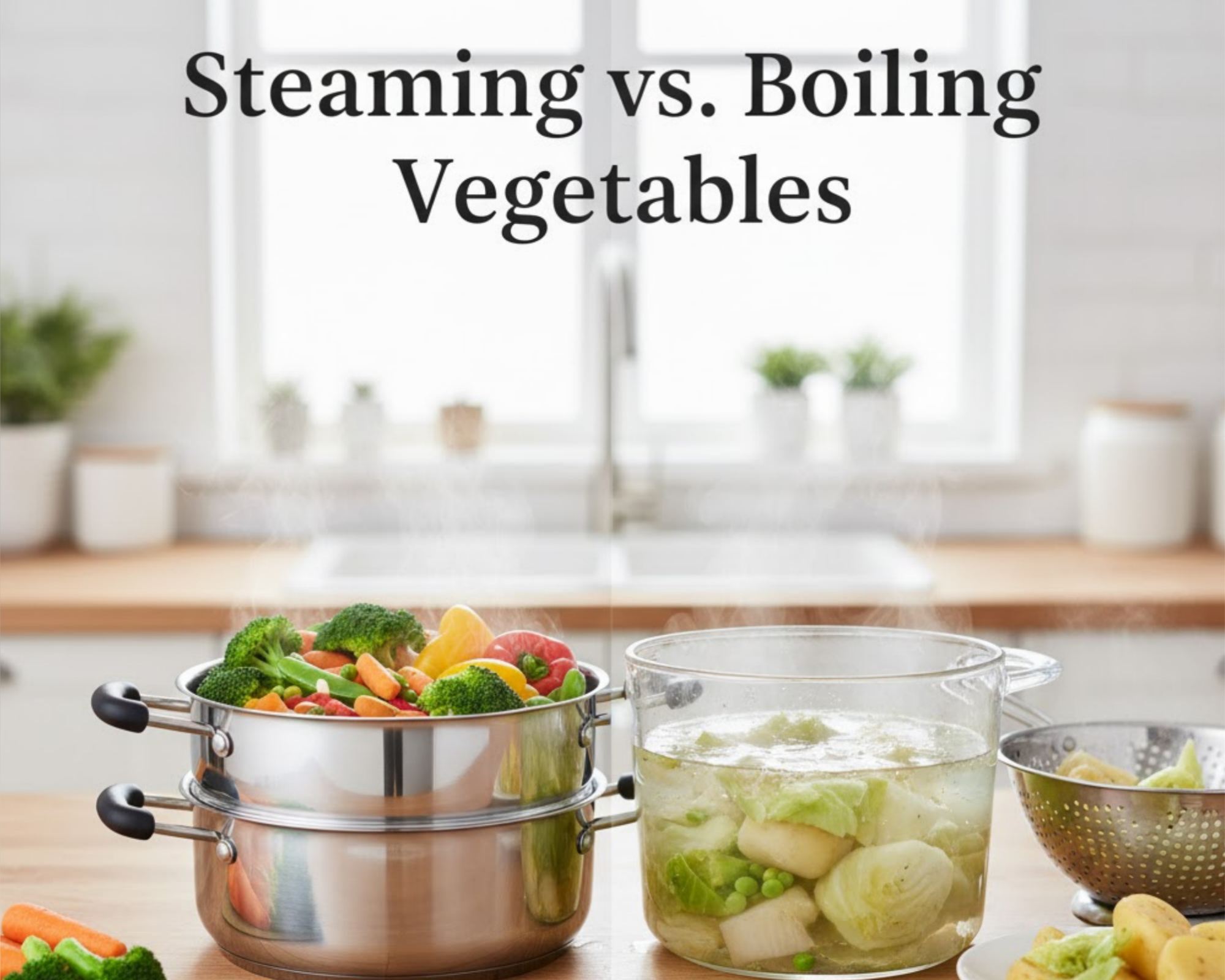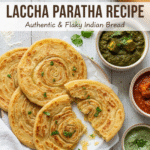Have you ever ever wondered why your perfectly cooked veggies now and again grow to be tasting bland or worse, lose their nutritional punch? You’re not by myself. maximum of us cook dinner veggies to make them simpler to digest, more flavorful, and safer to devour. however here’s the capture: the way you cook dinner them could make or smash their nutrient price.
in terms of wholesome cooking, methods stand out Steaming vs Boiling Vegetables. each are easy, water-based cooking strategies, but they affect the vitamins for your food in very special ways. So, which one’s better to your body? permit’s spoil it down.
knowledge the fundamentals: Steaming vs Boiling Vegetables
before we bounce into the technological know-how, permit’s get the fundamentals proper.
Boiling
Boiling way submerging veggies absolutely in water and cooking them at one hundred°C (212°F). It’s quick, simple, and has been the go-to approach for hundreds of years. however there’s a drawback extended exposure to hot water can reason vitamins and minerals to leach out into the water, in particular in case you drain it afterward.
Steaming
Steaming, then again, entails cooking veggies with the steam generated by boiling water, without virtually immersing them in it. It’s gentler at the nutrients and allows keep texture, flavor, and coloration.
think of steaming as giving your veggies a spa day, while boiling is more like a full dip in a warm tub enjoyable, sure, however no longer usually type to the sensitive stuff internal.
Nutrient preservation: The real conflict
allow’s get to the heart of the matter which approach preserves extra nutrients?
when you boil veggies, water-soluble vitamins like diet C, diet B-complicated, and certain minerals (such as potassium and magnesium) dissolve within the water. except you drink that water (say, in a soup or broth), the ones vitamins are misplaced for excellent.
Steaming, but, continues your greens above the water, which minimizes nutrient loss. studies suggests that steamed vegetables preserve up to ninety% in their vitamins, at the same time as boiled ones can also lose 30–50%, relying at the type of vegetable and cooking period.
So, in relation to nutrient protection, steaming genuinely takes the lead.
vitamins which are most stricken by heat
a few nutrients are heat-sensitive, and the way you cook dinner immediately impacts them.
diet C: extremely touchy to warmth and water. Steaming facilitates keep maximum of it, whilst boiling can wreck as much as half of.
vitamin B complicated: these nutrients dissolve without difficulty in water. Boiling often drains them away.
fats-Soluble nutrients (A, D, E, ok): those are greater solid for the duration of cooking, so each techniques hold them particularly nicely, especially if a small quantity of oil is delivered later.
In short, in case you need your greens to stay vitamin-rich, steaming is your most secure wager.
Texture and flavor: Which Wins on the Plate?
permit’s be sincere vitamins isn’t the only aspect that subjects. taste and texture are similarly critical.
Boiled greens
Boiled veggies can without difficulty turn gentle and bland, especially if overcooked. Their colourful colours fade, and that pleasant crunch disappears. however, boiling can make sure root veggies like potatoes, carrots, and beets softer and simpler to mash best for soups or stews.
Steamed vegetables
Steamed greens, then again, keep their shiny colorings, herbal sweetness, and company texture. They look clean, taste active, and feel outstanding to chunk into. That’s why professional cooks select steaming while presentation and texture remember.
So, in case you love your veggies with a piece of bite and taste, steaming wins once more.
Antioxidants and Phytochemicals: The Hidden Heroes
here’s something you might not recognise cooking doesn’t just have an effect on nutrients and minerals; it additionally modifications antioxidants and phytochemicals.
for instance, research display that steaming broccoli helps maintain its glycosylates (compounds related to cancer prevention), even as boiling can lessen them extensively. similarly, carrots keep extra beta-carotene (a form of diet A) whilst steamed instead of boiled.
but, there’s an interesting twist boiling tomatoes increases the provision of lycopene, a effective antioxidant. So, every so often, cooking can decorate sure nutrients.
Verdict: Steaming typically preserves antioxidants better, but in some instances (like tomatoes), boiling can raise nutrient absorption.
Calorie count number and fat thing
Neither steaming nor boiling provides more calories or fats, making both splendid for weight-conscious eaters. however, steaming offers more versatility while you want to beautify taste afterward.
you may drizzle olive oil, sprinkle herbs, or toss steamed greens in lemon juice all without dropping their dietary aspect. Boiled greens, being softer and water-logged, don’t soak up taste as nicely and often end up wanting greater seasoning (or butter!) to flavor excellent.
Cooking Time and convenience
Steaming vs Boiling Vegetables may be barely quicker, specifically for hard greens, considering direct water contact quickens heat switch. however the exchange-off? Nutrient loss.
Steaming takes a piece longer but doesn’t require constant attention. you can set it, stroll away, and are available returned to perfectly tender greens. Plus, you can steam more than one gadgets without delay the usage of stacked steamers a time-saver for busy mornings or meal prep.
best vegetables for Steaming vs Boiling
let’s get realistic now not all veggies behave the equal way while cooked.
pleasant greens to Steam:
Broccoli
Cauliflower
Spinach
Beans
Zucchini
Peas
Asparagus
those vegetables are sensitive and lose nutrients fast in boiling water, so steaming helps hold their colour and crunch.
best vegetables to Boil:
Potatoes
candy potatoes
Carrots
Beets
Corn on the cob
these are denser and gain from boiling, because it softens their texture and complements their sweetness.
flavor Retention: Why Steaming Tastes better
Ever wondered why steamed vegetables taste “brisker”? It’s because steaming doesn’t wash away the herbal sugars and flavors that give greens their awesome flavor.
Boiling often leaves vegetables tasting flat because the water pulls out the ones flavor compounds together with nutrients. That’s why cooks say, “Don’t boil your veggies until you plan to drink the water.”
So, if you’re cooking to thrill your taste buds as plenty as your fitness, steaming wins once more.
Environmental and sensible benefits
Steaming vs Boiling Vegetables uses less water and often less power in comparison to boiling. It’s additionally extra efficient if you use a multi-layered steamer, permitting you to prepare dinner several foods simultaneously.
Plus, no need to worry approximately dropping vitamins into the drain all the goodness remains in your vegetables, right wherein it belongs.
Combining techniques for the fine of each Worlds
here’s a touch secret you don’t must pick out just one approach.
A clever technique is to combine boiling and steaming depending for your dish.
for instance:
Boil carrots in short to soften them, then steam for flavor retention.
Boil root greens for soups, but steam leafy vegetables and beans for side dishes.
Or blanch (in short boil) vegetables like spinach, then finish them with a mild steam for texture.
The key is balance knowing whilst each method works exceptional.
Read More: Almonds vs Pumpkin Seeds: The Healthier Choice for Muscle, Digestion & Energy
Conclusion
in relation to preserving vitamins, texture, and flavor, Steaming vs Boiling Vegetables. It’s the gentler, cleanser, and more healthy manner to cook vegetables without sacrificing their herbal goodness.
Boiling still has its place especially in soups, stews, and dishes where you consume the cooking water — but for everyday meals, steaming is the way to go if you’re serious about health and taste.






